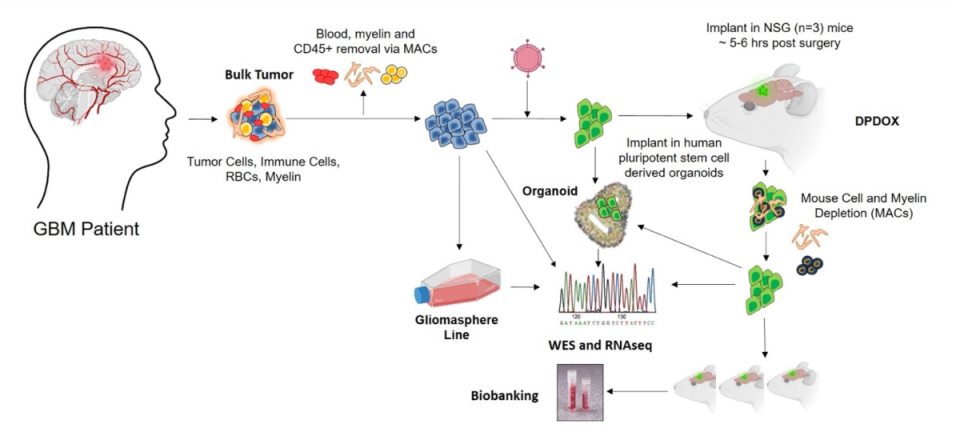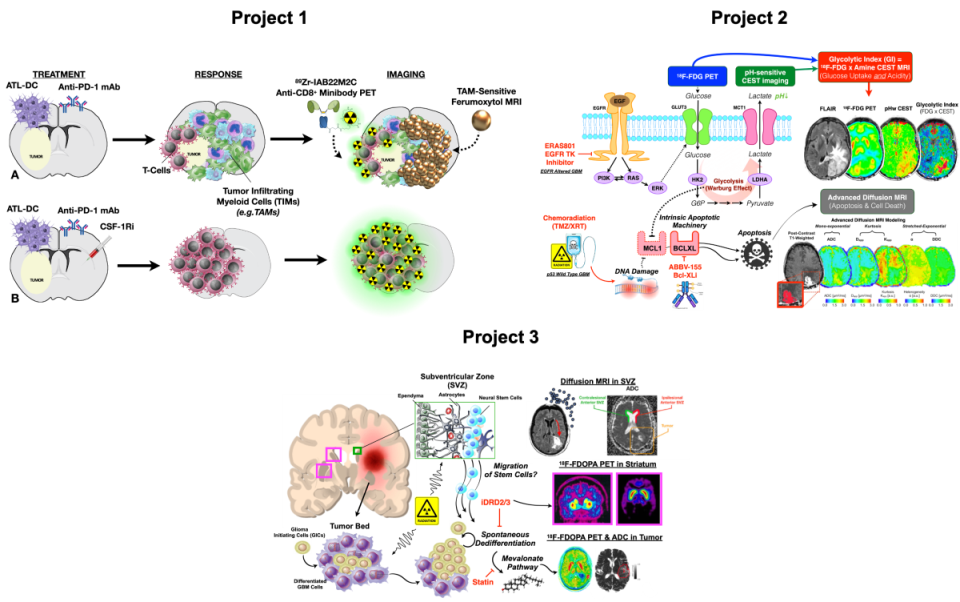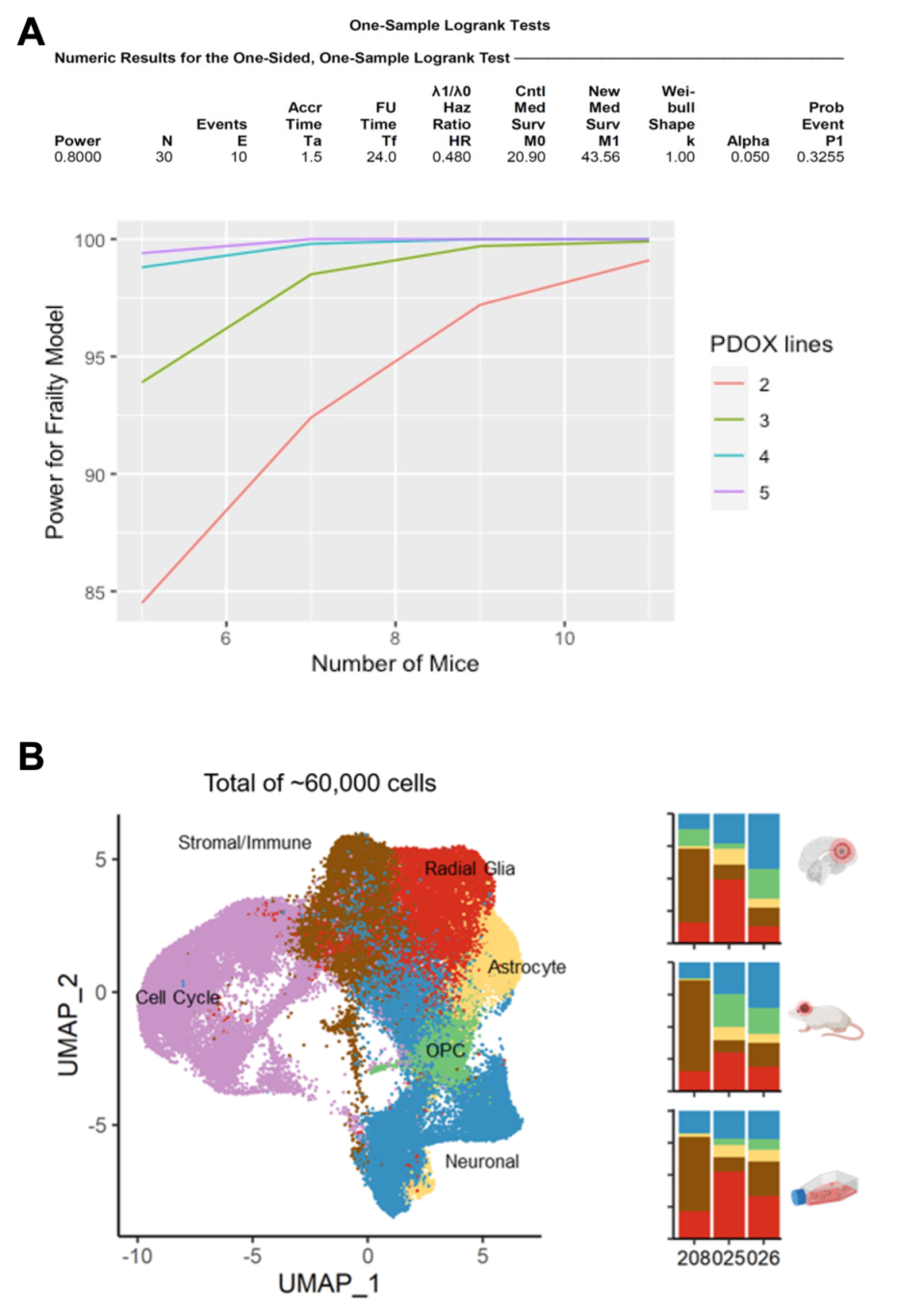Shared Resource Cores

Four Shared Resource Cores support the administrative, laboratory, and clinical research efforts of the UCLA SPORE in Brain Cancer Research Projects, Career Enhancement Projects, and Developmental Research Projects.
Core 1
Biospecimen and Pathology Core
The Biospecimen and Pathology Core (BiPC), a biorepository and multifaceted research resource, provides critical support for the translational and diagnostic/therapeutic studies of the three major UCLA Brain SPORE projects, which are directed at understanding glioma biology and developing novel therapeutic approaches for brain cancer. In addition, the BiPC supports various developmental research projects and career enhancement programs. The SPORE projects have a critical need for high-quality brain tumor biospecimens, associated clinical and molecular annotations, histology, tissue microdissection, immunohistochemistry and characterization of models systems including neurospheres and xenografts. Neuropathology and biobanking expertise exist to accomplish the research aims and tightly interacts with the other cores.
- Aim 1: To optimally collect, store, and distribute high-quality brain tumor biospecimens with detailed clinical and molecular annotations (tumor tissue, blood, urine, and cerebrospinal fluid) and implement biobanking best practices.
- Aim 2: To perform molecular characterization of patient-derived tumor tissue and specific project models using histologic analysis, immunohistochemistry and genomic tools, including characterization of the tumor microenvironment and apoptotic machinery and single-cell RNA sequencing.
- Aim 3: To create, provide, and characterize novel human biospecimen derivatives, gliomaspheres, patient-derived orthotopic xenografts (PDOX), and organoids that represent the molecular diversity of glioblastoma.

Core 2
Neuro-Imaging Core
The goal of the Neuro-Imaging Core (NIC) is to provide advanced MRI and PET imaging support with established reliability and consistency to SPORE project investigators for their respective projects.The NIC uses:
- Aim 1: Quantitative μMRI and μPET for pre-clinical imaging
- Aim 2: State-of-the-art MR and PET imaging acquisition, advanced post-processing, and novel analysis tools for clinical imaging of patients in novel clinical trials.
- Aim 3: Professional expertise and resources for traditional and enhanced radiographic response assessment for the clinical trials.
For Project 1, we theorize that tumors treated with DC vaccination and immune modulation will result in significantly higher uptake on immunoPET (89Zr-IAB22M2C Anti-CD8+ Minibody PET) and a significant decrease in tumor T2* on TAM-sensitive ferumoxytol MRI.
For Project 2, we theorize that a combined imaging biomarker – simultaneous 18F-FDG PET and pH-weighted CEST-EPI – may be a valuable imaging biomarker for glycolytic flux, which can be perturbed using EGFR inhibition (in EGFR altered GBM) or chemoradiation (in p53 wild type GBM).
For Project 3, we theorize that radiation therapy changes the microstructure of the subventricular zone (SVZ), known to harbor adult neural stem cells, as measured via diffusion MRI.

Core 3
Biostatistics and Bioinformatics Core
The overarching goal of the Biostatistics and Bioinformatics Core (BBC) of the UCLA Brain SPORE is to provide comprehensive support in the areas of biostatistics and bioinformatics for all research projects, developmental research and career enhancement programs, and other cores of the UCLA SPORE in Brain Cancer. This Core has two specific aims:
Aim 1: Biostatistics Support: Provide SPORE investigators broad-based statistical support for the individual SPORE projects. This includes statistical advice on study design, analysis and interpretation of experimental results, preparation of manuscripts, development and submission of new grant applications, data management, and the design, analysis, conduct, and monitoring of SPORE investigator-initiated clinical trials. Core 3 also develops relevant innovative methodologies and analytical tools that address specific needs from SPORE projects.
Aim 2: Bioinformatics Support: Provide infrastructure and bioinformatics leadership to design and carry out projects using high-throughput technologies, such as genomic, transcriptomic, and/or lipidomic data from tumors and/or immune cells, from bulk tissue and/or single cell next generation sequencing (NGS), and from patient tumors involved in clinical trials and from preclinical xenograft and immunocompetent mouse models. Up-to-date bioinformatics software and pipelines are provided.

Core 4
Administrative Core
The Administrative Core is responsible for the oversight and daily functions of the SPORE. It provides organizational leadership and administrative support for all of the aspects of the SPORE in order to ensure the overall successful conduct of the program.
This Core oversees scientific management, including ongoing management and scientific review of all projects and cores to ensure that the stated scientific goals of the SPORE are met. It will organize regularly scheduled meetings and seminars, schedule and organize the annual UCLA Brain Cancer SPORE Symposium, and oversee the administration of the SPORE Developmental Research and Career Enhancement Programs. It will be the liaison between the SPORE and the UCLA Health Jonsson Comprehensive Cancer Center, other UCLA academic and administrative bodies, NIH/NCI staff, IAB/EAB members, and patient advocacy groups. It will ensure that appropriate regulatory approvals are maintained and will complete necessary documentation with regulatory agencies.
The Administrative Core will also ensure that data and resources are shared appropriately in order to promote intra- and inter-SPORE collaboration, as well as collaborations with other groups and investigators that can help further cutting-edge brain cancer research.